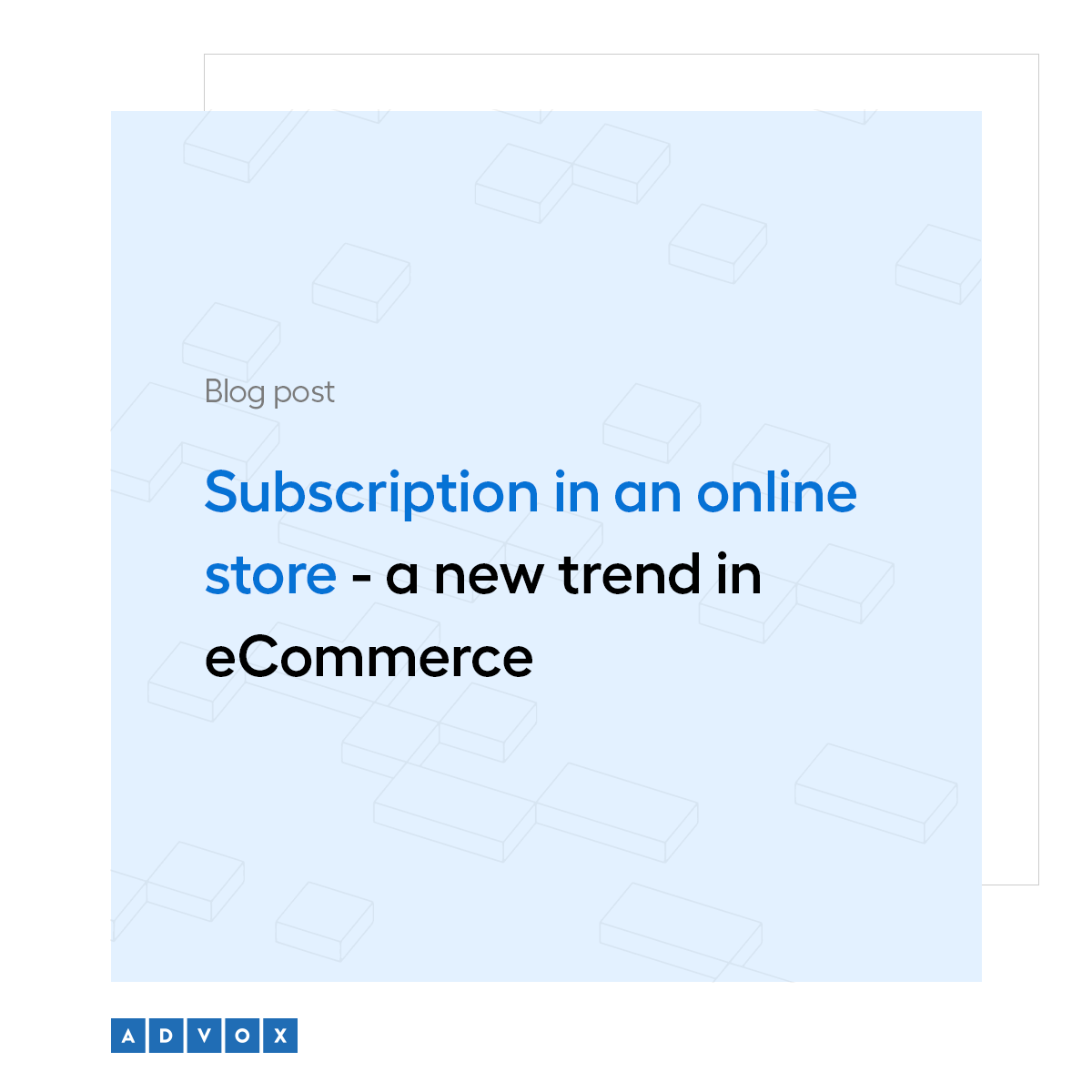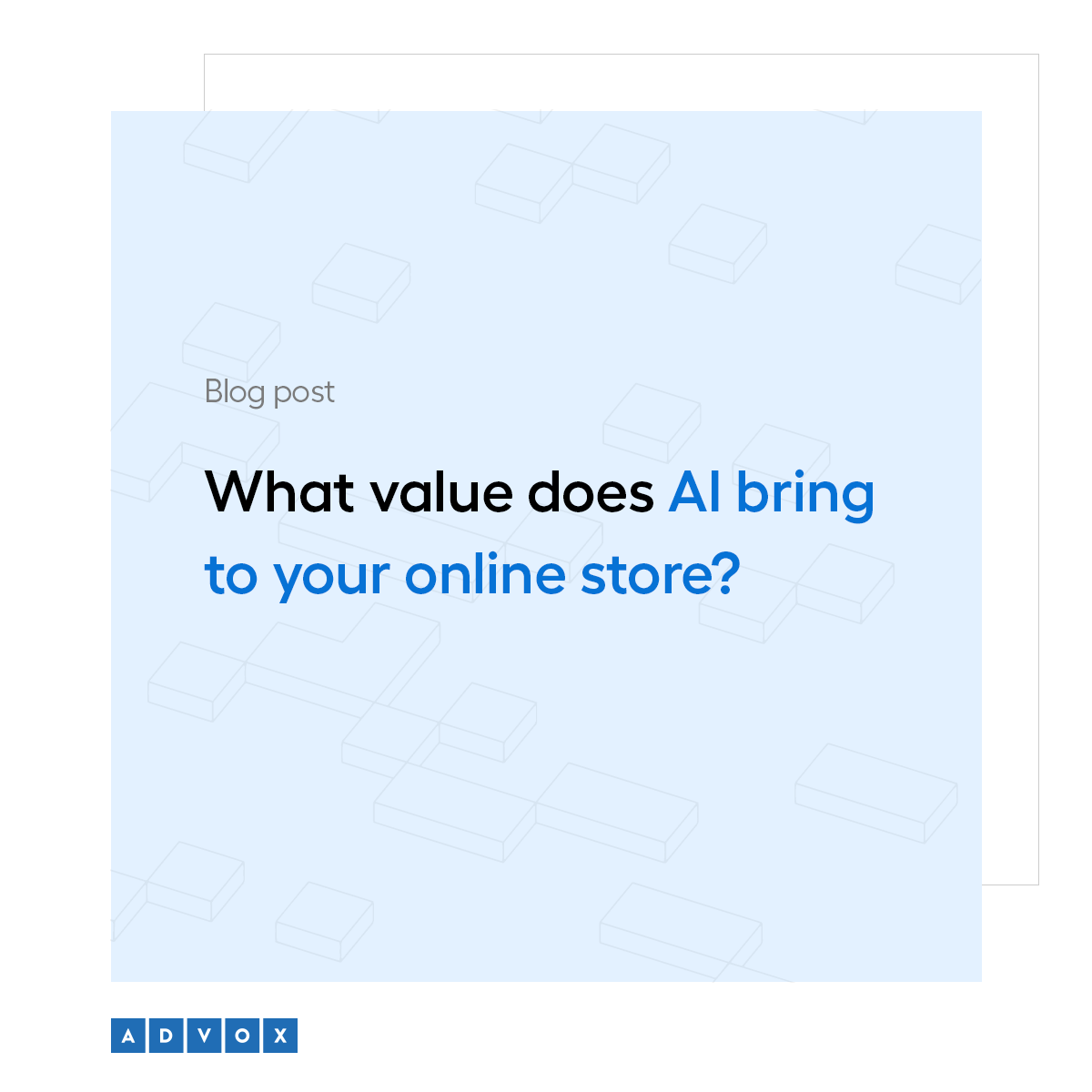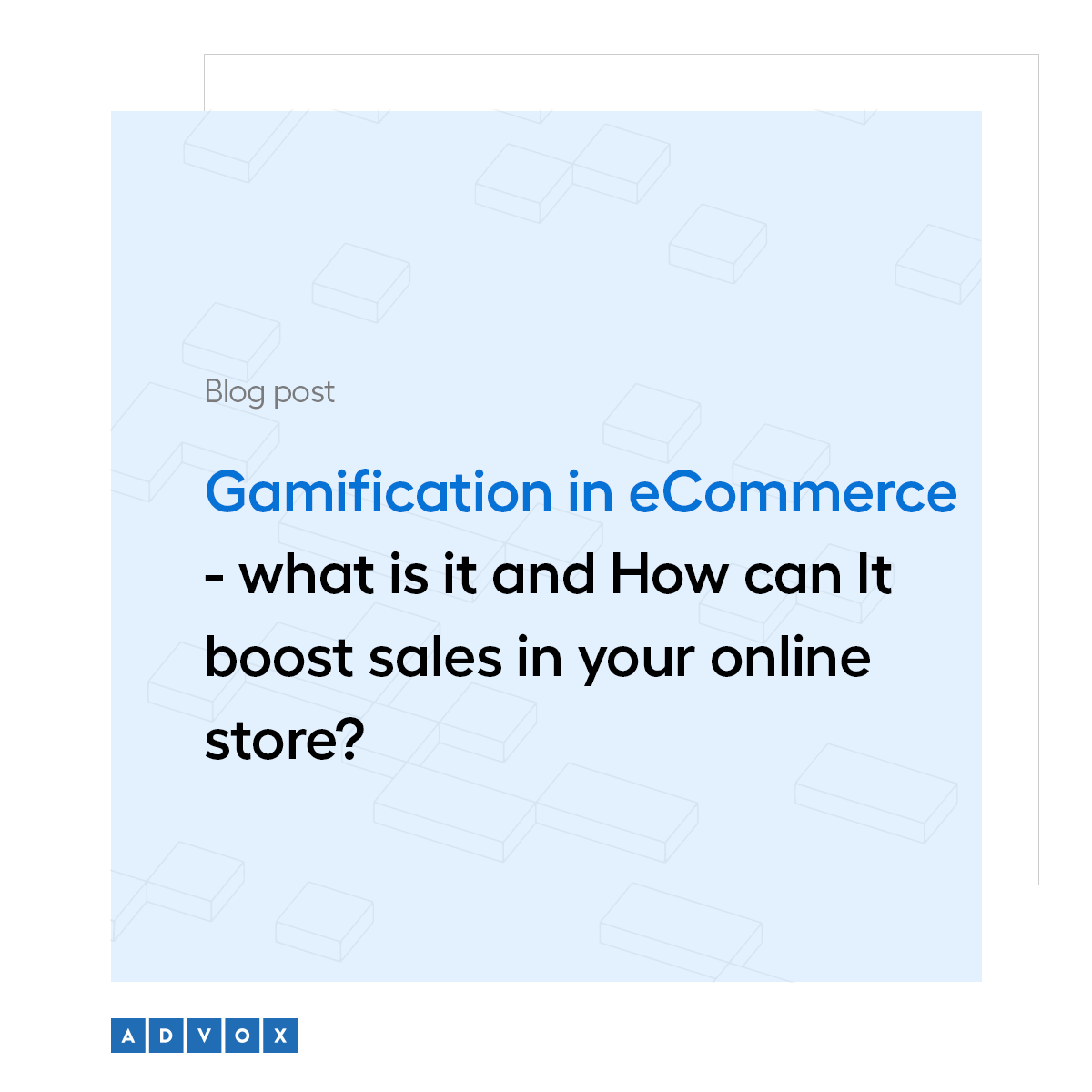Table of contents:
- The Foundations of the eCommerce Industry – Is Everything Changing?
- eCommerce Trends 2025 – what will drive the industry?
- Design trends – what will a stylish store look like in 2025?
- Predictive Intelligence – artificial intelligence in a different form
- Hybrid Commerce – a fresh approach to online and offline shopping
- Sustainable eCommerce – environmentally conscious online shopping
- Gamification – a creative way to engage customers
- Don't wait for 2025 – make changes to your online store now!
"New year, new eCommerce industry" – this phrase perfectly captures the pace of change in the online retail world. Every new year brings fresh trends that impact the strategies, tools, and technologies used by online sellers. It's the ideal time to implement untapped solutions, adapt to current consumer expectations, and set new goals. Want to discover the leading trends in eCommerce for 2025? Read this article to the end and stay ahead of the competition!
The Foundations of the eCommerce Industry – Is Everything Changing?
In the eCommerce world, where new trends emerge at lightning speed, it’s easy to feel overwhelmed by the constantly shifting market demands. But is there anything that remains constant in this dynamic environment? It turns out, yes. Certain foundations remain steady and are the backbone of an effective eCommerce strategy. Every online store should prioritise these key elements:
- mobile optimization,
- accessibility,
- transaction security,
- high-quality customer service.
These fundamental aspects are universal and relevant every year. They help build trust, ensure shopping convenience, and protect brand image. And what about the trends? You’ll discover those in the next part of the article!
eCommerce Trends 2025 – what will drive the industry?
As the year comes to a close, the eCommerce industry starts focusing on the future. Everywhere you look, there’s news about upcoming trends, must-have features for online stores, and innovations that promise to revolutionise the market. But how do you avoid getting lost in it all? The flood of information can be overwhelming, so we’ve prepared roundup of the most important eCommerce trends for 2025. Discover which ones are truly worth your attention – and learn how to use them to effectively grow your online business!
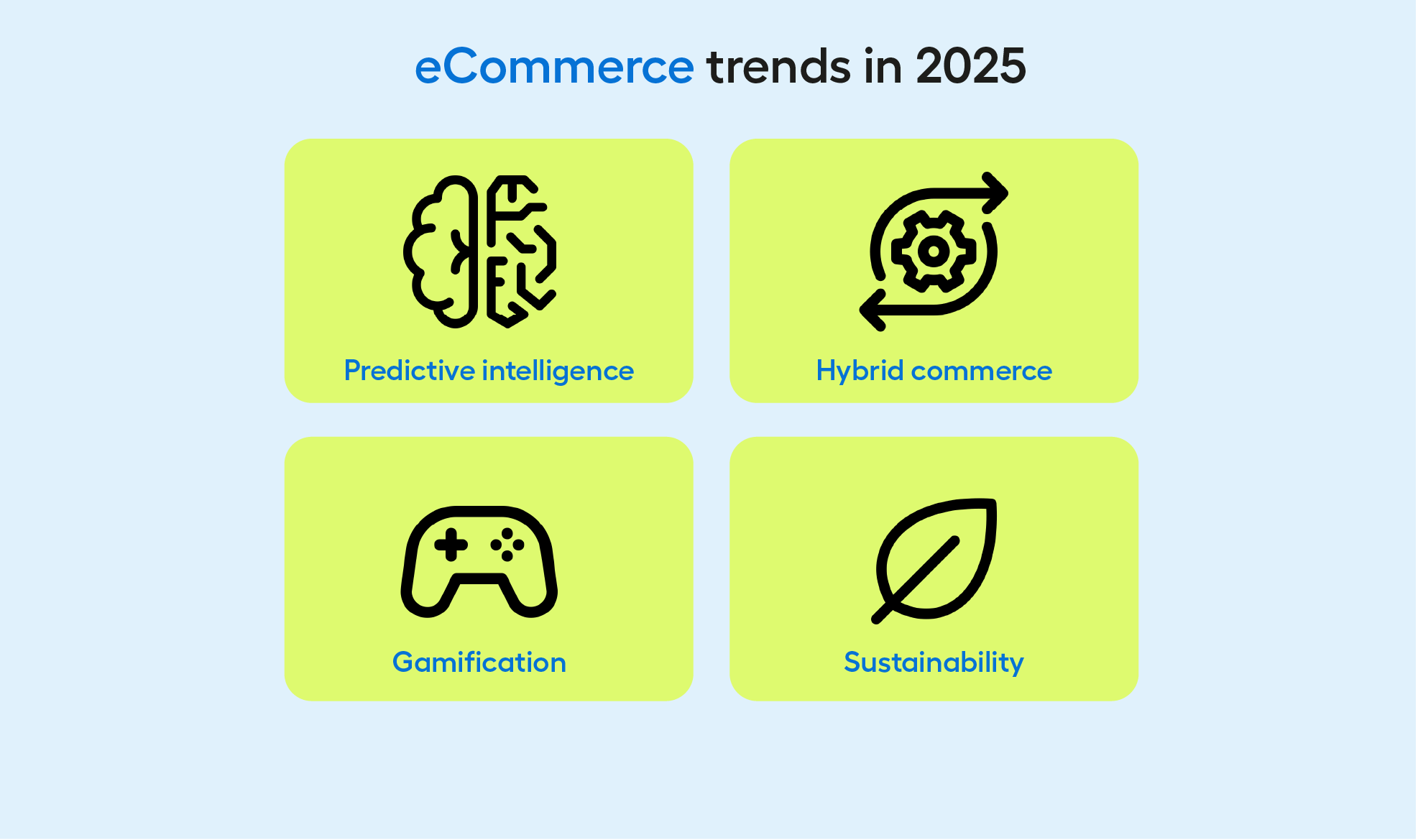
Design trends – what will a stylish store look like in 2025?
Design trends in eCommerce are most noticeable in the visual aspects – after all, first impressions often determine whether a customer stays on the site. A trendy online store in 2025 will primarily be a space that combines aesthetics with functionality, creating an intuitive shopping experience.
Minimalism will continue to dominate; simplicity and clarity allow users to focus on essential elements without distraction. However, this minimalist look will often be complemented by bold accents like contrasting colours and striking fonts, adding personality and memorability to the site.
Beyond aesthetics, a key focus will be designing individual page elements to simplify the user experience and facilitate smooth purchases. A user-friendly, on-trend design will also include features like:
- dynamic product presentation - beyond photos, incorporating 3D visualisations and short videos. These media resemble popular content formats on platforms like TikTok, providing a more engaging experience.
- one-click checkout - instead of entering data and choosing payment and delivery methods, all fields are pre-filled based on past purchases. For example, if a customer previously chose parcel locker delivery, the system will automatically select this option. Shoppers can complete a purchase with a single click (unless they wish to change preferences).
- infinite scroll - this feature eliminates the need to reload additional pages, allowing customers to browse seamlessly. It boosts engagement and encourages visitors to stay on the site longer.
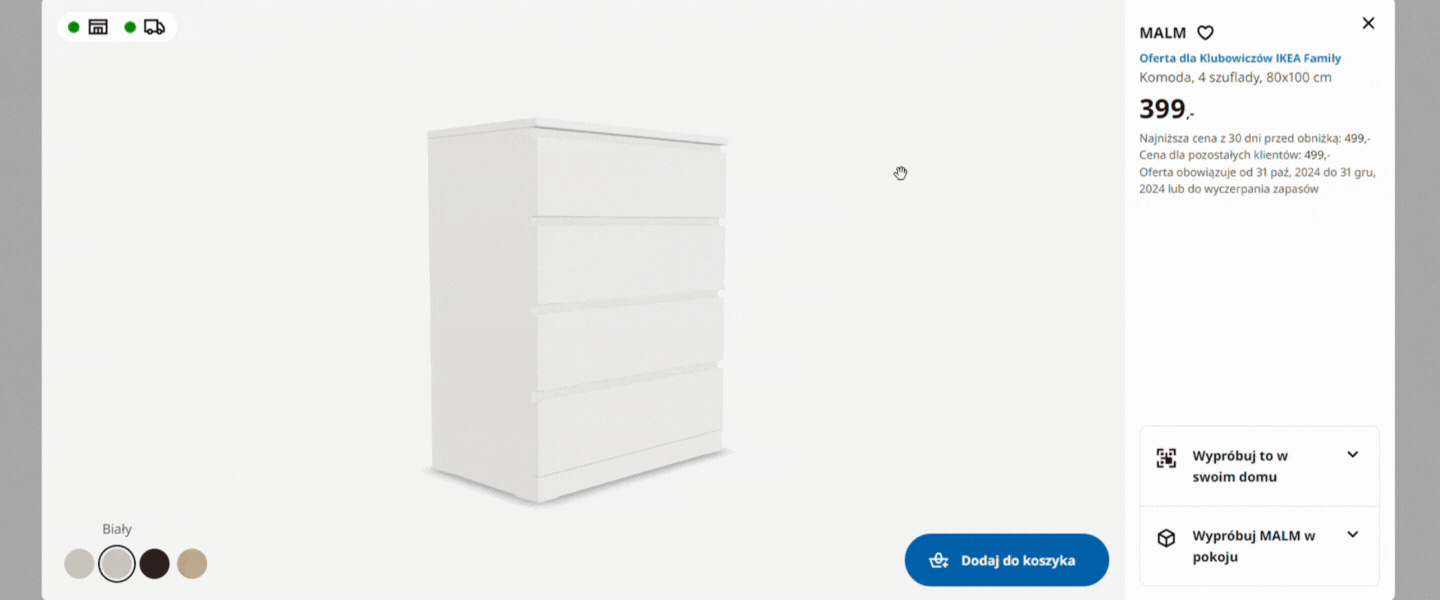 Dynamic Product Presentation in the Ikea Store
Dynamic Product Presentation in the Ikea Store
When implementing all these elements, it's essential not to lose sight of the brand's image – the style and consistency developed over the years are more valuable than passing trends. Trends can enhance a store's aesthetics, but a truly strong brand stands out through authenticity and consistent messaging, which ultimately builds customer trust and loyalty.
Predictive Intelligence – artificial intelligence in a different form
Artificial Intelligence (AI) complements human efforts in various ways. We've seen this first hand over recent months, with AI dominating industry discussions – from debates about whether AI will replace human jobs, how it might accelerate business growth, to even questioning if it poses a threat to business itself. In this time, many AI-based tools have emerged, supporting nearly every business aspect – from content generation and process automation to customer service.
AI isn’t slowing down in 2025 – increasingly sophisticated machine learning models are emerging, and the databases from which AI gathers information are becoming larger and more accurate. This is the foundation of Predictive Intelligence, a technology that not only responds to user needs but also anticipates them.
In eCommerce, this translates to delivering highly personalised shopping experiences – from tailored product recommendations to targeted promotions. In practical terms, AI tools will be able to predict customer behaviours based on their past interactions with the brand, allowing products or offers to be presented at just the right moment. This might include a suggestion to repurchase previously bought items or a gentle reminder of upcoming promotions on wishlist products. This approach makes customers feel understood and valued, strengthening their loyalty and creating a sense of exclusivity. Studies (source: PWC) show that half of consumers trust AI to provide accurate product recommendations.
Embracing this trend could mean that eCommerce companies investing in predictive intelligence will not only be able to sell more effectively but also provide more satisfying shopping experiences for their customers.
Hybrid Commerce – a fresh approach to online and offline shopping
In 2025, the line between in-store and online shopping will continue to blur, giving rise to a new concept: Hybrid Commerce. So, what does this model entail?
Hybrid Commerce is a flexible approach to shopping, where customers can seamlessly move between the physical and digital worlds. While similar trends like omnichannel and unified commerce have shaped sales in recent years, Hybrid Commerce goes beyond these strategies, offering solutions such as online-to-offline commerce (O2O). O2O focuses on transforming online customers into in-store visitors. For example, QR codes scanned in a physical store can provide access to thousands of online products, encouraging further digital purchases (with options like in-store pickup afterward). Other popular features include:
- Virtual fitting rooms – with augmented reality (AR) technology, customers can "try on" products online before deciding to buy in-store or online. This is particularly useful for clothing, glasses, or cosmetics, allowing a fuller product experience before it’s in their hands.
- Digital Checkouts – allow customers to scan selected products using an app on their smartphone and make payments without using a traditional register. For example, the Rossmann drugstore chain offers this solution, enabling its customers to shop conveniently without waiting in line.
- Buy Online, Pick Up In-Store (Click and Collect) – customers can order products online and pick them up at a nearby store, avoiding delivery waits or shipping costs. A bonus is the ability to view the item before taking it home, enhancing shopping comfort and reducing the likelihood of returns.
 O2O solutions in Reserved application
O2O solutions in Reserved application
Blurring the boundaries between physical and digital shopping brings significant advantages, especially as Gen Z shoppers frequently use their phones in physical stores, reflecting their natural tendency toward multichannel shopping.
Sustainable eCommerce – environmentally conscious online shopping
Environmental awareness today is more than a fleeting trend – with rising environmental challenges, consumers are increasingly choosing brands that prioritise responsible practices. According to the report "Social Responsibility, Responsible Communication. ESG in Corporate Communication Strategy," 78% of respondents express a willingness to buy sustainable products. Eco-friendly efforts can span various aspects of a company's operations, from raw materials and packaging to social initiatives.
To start, companies can focus on their products – using eco-friendly materials, promoting recycling, and reducing environmental impact (e.g., lowering energy and water usage) are just a few examples. IKEA exemplifies this approach, with 60% of its products now made from renewable materials.
Secondly, some companies actively organise campaigns supporting environmental conservation. Patagonia, an apparel brand known for its eco-conscious actions, donates 1% of its sales to environmental protection and restoration. Since 1985, the company has allocated $140 million to this cause, serving as an inspiring example of genuine commitment.
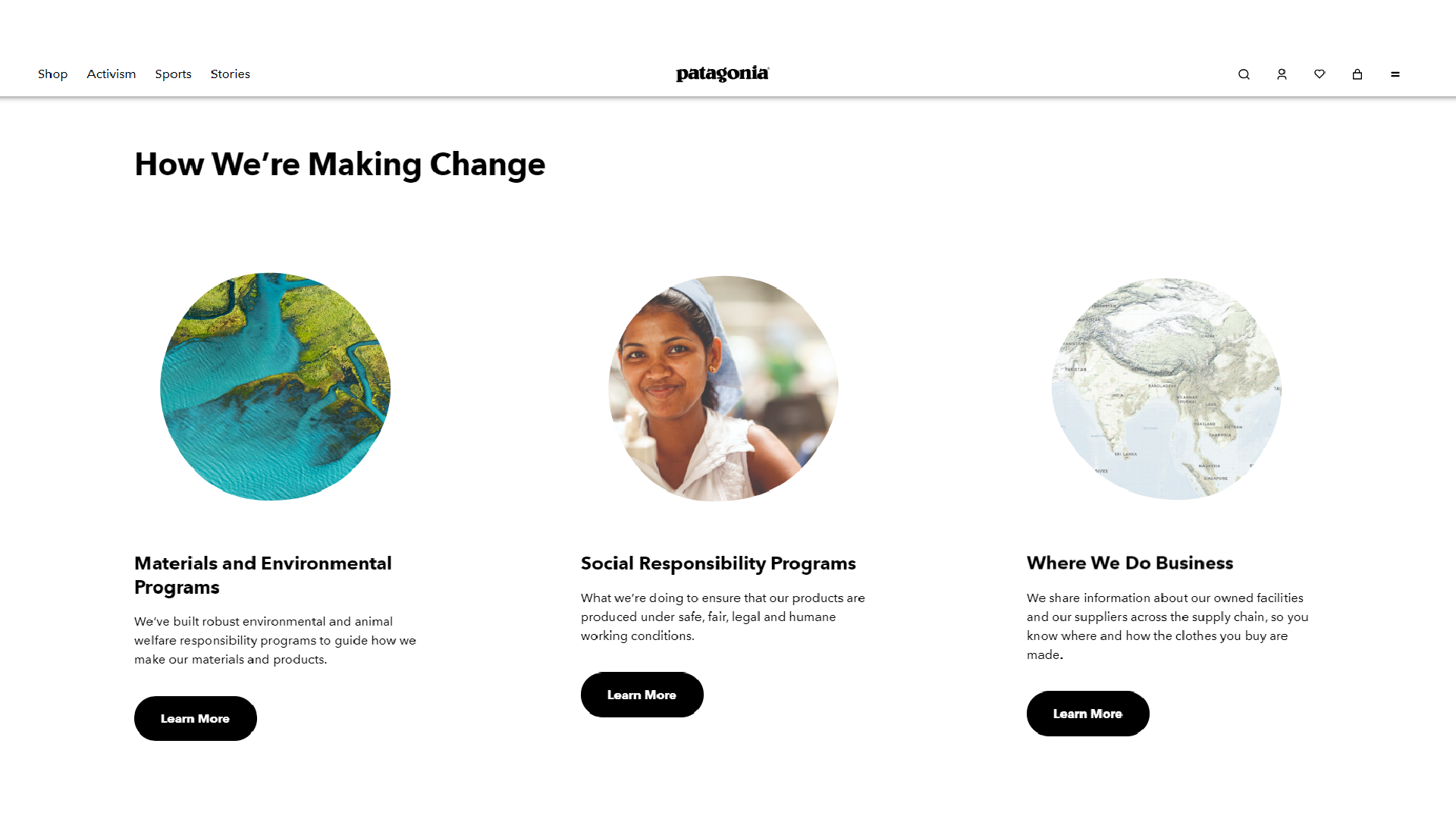 Source: https://www.patagonia.com/our-footprint/
Source: https://www.patagonia.com/our-footprint/
Thirdly, sustainability extends to packaging, especially in online orders. Choosing eco-friendly materials is not only an ethical choice but also aligns with EU regulations, such as the Packaging and Packaging Waste Directive. These regulations aim to reduce unnecessary waste and set packaging size limits to cut down on unused space in parcels. Excess space requires more transportation resources, leading to increased CO2 emissions and other air pollutants.
When implementing eco-friendly practices in eCommerce, it’s essential that these initiatives are authentic. Consumers are increasingly aware of greenwashing – the deceptive, manipulative use of an eco-friendly image. Genuine actions backed by clear evidence are now not only expected but are fundamental to building trust and loyalty among customers.
Gamification – a creative way to engage customers
The online store has evolved beyond merely a place to buy products. Customers increasingly expect that browsing an eCommerce platform will be an exciting experience. Gamification, a key trend for 2025, can make this possible. But what exactly does this term mean?
Gamification is the application of game-like elements – such as reward systems, levels, challenges, and interactive content – to boost user engagement on a shopping platform. It turns traditional shopping into an emotionally engaging experience, encouraging users to return to the site and spend more time there. According to a report by Juniper Research, the effects of gamification can be substantial, with customer engagement increasing on average by 30% to 80%, depending on the industry and method of implementation.
Gamification also introduces an element of competition, which particularly attracts people who enjoy challenges. Stores can hold regular contests with prizes or present users with personalised challenges (e.g., purchasing products from a specific category or spinning a virtual wheel to win a discount). This interactive approach makes shopping more than just a transaction – it becomes a memorable experience that fosters positive associations.
Don't wait for 2025 – make changes to your online store now!
Now that you know the key eCommerce trends for the upcoming year, what’s next? Don’t wait! Start preparing your store for changes now. However, remember that every new element you plan to implement should align with your brand's strategy and vision. Blindly following trends can backfire, diluting your brand image and weakening customer relationships. Choose the trends that best match the character of your business, and build a strong brand that, with each change, becomes even more attuned to the needs of today’s customers. With this knowledge in hand, are you ready for change and success in the new year?
